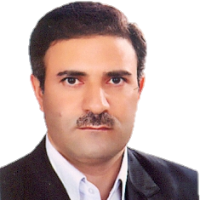Design and validation of augmented reality content production model with emphasis on constructivism approach
Due to the growing need of learners for new digital technologies in education, especially augmented reality technology, which has significant potential, the inadequacy of common electronic content, their lack of educational principles and standards and the lack of a suitable model for producing augmented reality content in education with a constructivism approach necessitate conducting research and finding a solution. The current study aimed to design and validate the model of production of augmented reality content with an emphasis on the constructivism approach.
The present study was an applied one according to the purpose and based on the method, it was a mixture or combination of consecutive exploratory type. Inductive qualitative content analysis was used to extract the template components. In reviewing texts and articles, the systematic review method was used and to determine the internal validity, the survey method was utilized. The statistical population for content analysis included scientific sources, books, articles, treatises and valid scientific documents in the field of augmented reality between 2000-2022. By selecting related keywords, the search was conducted in local and international citation databases. The statistical sample was selected via purposive method and included 232 cases. The statistical population for the interview included professors, specialists and producers of augmented reality and the statistical sample of the target population was formed via purposive sampling consisting of 21 people. Also, the statistical population for model validation included augmented reality specialists and university professors, from which a statistical sample of 33 people were selected via purposive sampling method. Data collection tools included a researcher-made questionnaire and a semi-structured interview. To check the inter-coder reliability, two methods of decoding and second coding were used. The content validity of the questionnaire was confirmed by experts. In order to determine the reliability coefficient of the questionnaire, Cronbach's alpha test and to determine the internal validity of the model, frequency, mean, standard deviation, mean standard error and one-sample t-test were used.
In the first and second method, the inter-coder reliability was 91% and 87%, respectively. And the content validity ratio index was 93% and 96%, respectively. The reliability coefficient of the questionnaire was 96% through Cronbach's alpha test. The value of t-test was positive for all questions and according to the significance level (Sig= 0.001), the difference between the mean of the questions and the theoretical mean was significant. The results of content analysis showed that 13 main categories and 55 subcategories were extracted for the augmented reality content production model. The main categories of augmented reality content production model included management, instructional design, design of constructivism learning environments, multimedia design principles, cognitive load control, technical design, production, execution, rendering, publication, development, program evaluation and academic achievement.
By identifying the categories and their subcategories, first a conceptual model and then a process model were designed. The innovation of the designed comprehensive model in instructional and technical design requires the simultaneous attention to instructional and technical dimensions. In the presented model, the categories related to the instructional dimensions were environmentally located and the categories related to the technical dimensions were centrally located. The results of statistical analysis showed that from the perspective of experts, the designed model had a high validity and its validity was confirmed. Therefore, it is suggested that this model be used to produce electronic augmented reality content, especially for position-based training, based on a constructivism approach and designed with augmented reality content.
- حق عضویت دریافتی صرف حمایت از نشریات عضو و نگهداری، تکمیل و توسعه مگیران میشود.
- پرداخت حق اشتراک و دانلود مقالات اجازه بازنشر آن در سایر رسانههای چاپی و دیجیتال را به کاربر نمیدهد.




